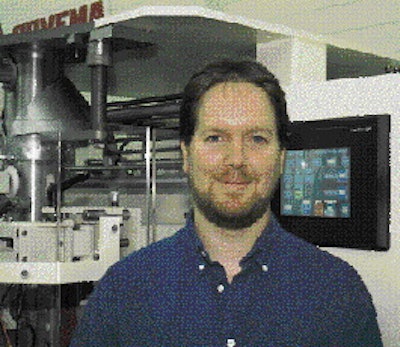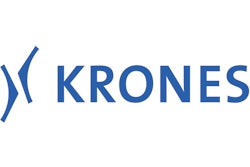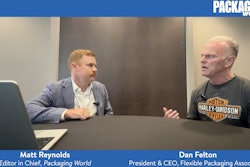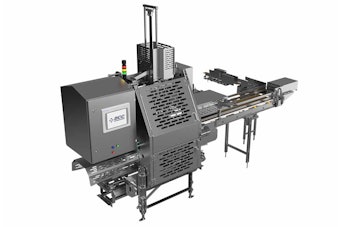As PC-based control continues to evolve, many packagers are beginning to wonder: Should they make the switch from PLCs? To answer that question, Packaging World took the unusual step of interviewing engineers at leading packaging machinery builders, vs end-users. Normally PW restricts its feature article coverage to news that's made by other readers.
But in this case, many end-users defer the choice of control to the engineering judgement of the machine builders who specify them. For this reason, we asked the machinery builders to put aside commercial concerns and speak out candidly on the topic. This report is the second of a two-part series. (For the first part, see PW, Sept. '99, p. 118 or packworld.com/go/pcctrl.)
PC 'standard' isn't
One of the challenges facing PC controllers is ironically the same problem that PLC manufacturers have faced for years: a lack of generally agreed-upon standards for the programming language and operating system. While Microsoft is famous for its iron grip on the PC operating system market for the consumer and office computer market, its footing in PC controls for packaging equipment is far less sure.
Few if any packaging machinery builders use PC controllers with a Microsoft Windows(TM) operating system for machine control. Instead, they are using either a DOS-based operating system or operating systems that are known as Real-Time Operating Systems (RTOS), from a variety of suppliers. This lack of standardization is holding many machinery builders back.
"There isn't a standard on how you perform real-time control on a PC," says Joe Kimbrell. He's the electrical engineering manager at Rovema (Lawrenceville, GA), which makes form/fill/seal equipment and typically uses PLCs to control them. "Everyone says Windows NT, but almost everybody that uses Windows NT modifies that to some extent, so it's not an off-the-shelf Windows NT package anymore."
For others, such as Krones (Franklin, WI)--which uses PLCs and PCs, sometimes on the same machine--there are questions surrounding the performance of a Windows-based OS for high-end control.
"What we see with the PC control," says Mark Oldenburg, electrical R&D supervisor, "is the software solutions that [PC controls vendors] are attempting to implement are typically commercial or consumer systems being contorted into industrial systems."
Windows NT, agrees Oldenburg, is "too large and bulky for embedded applications," says Oldenburg. ("Embedded" refers to a controller that is embedded as a component of the machine, vs a stand-alone PC in its own separate enclosure.)
Even Microsoft has acknowledged that NT isn't appropriate for embedded control applications. Its solution is the forthcoming version CE 3.0, due out April 2000. Windows CE is a smaller, scaled-down OS that debuted on hand-held and palm-size computing devices. However, Microsoft has visions of using the OS for embedded applications everywhere, from TV set-top cable boxes to automobiles to packaging machinery. And that, according to Oldenburg, is precisely the problem.
"We used to say 'Windows for Washing Machines,'" jokes Oldenburg. The problem boils down to what is referred to as "deterministic" or hard real-time control. That's the ability of the controller to keep up with, or actually outpace, the speed and accuracy requirements of the physical machine, no matter how fast the machine runs.
"If you're a snail crossing the highway, real time is pretty slow," says Oldenburg. "If you're talking in the tens or hundreds of microseconds, hard real time is very, very fast.
"In some cases CE might work," acknowledges Oldenburg. But he questions whether "Microsoft [will] pump the needed dollars into Windows CE to achieve" the performance required for high-end packaging applications.
What does work are DOS-based or real-time operating systems. In packaging, it's currently the overwhelming choice for PC control. But no one RTOS dominates as a standard.
"It's a difficult question," admits Ed Young, project manager with Ilapak (Newton, PA). Ilapak makes horizontal overwrappers and vertical f/f/s machines that are typically PC-controlled.
"But for our application we feel that speed and price" outweigh any questions over standards, according to Young.
Development tools
One aspect of the standards issue is the lack of standard programming or development tools for PCs. Nearly all of the PC controller-using machinery builders interviewed for this story program them in C++, a general-purpose PC programming language. Krones, which uses C++ quite a bit for programming PC-based motion control cards, questions whether C++ is a viable platform for general machine control.
With PLCs, machine builders use the PLC manufacturer's development software to write customer-specific ladder logic programs. That development software handles a lot of the overhead in terms of machine control, leaving the machine builder free to focus solely on the application.
Using a PC language such as C++, all that overhead must be handled by code that must be written from scratch, according to Oldenburg. Modifying that code for each application, and keeping track of those modifications, can be a burdensome exercise in version control, maintains Rick Griffiths, electrical engineering manager at Krones.
"It'll absolutely kill you," says Griffiths. "I'd hate to be the programmer that has to customize and have revision control over the code when every machine that leaves the place is different."
However, other machinery builders that use C++ haven't reported this to be a problem. And Ilapak actually cites the use of C++ programs, which run very fast, as a competitive advantage that squeezes more speed out of a PC vs a comparable PLC.
While PC controls are frequently criticized for lack of standardization, PLCs aren't exactly known for seamless interoperability between manufacturers. Each brand of PLC has a different version of ladder logic, with a different version of the software tools that are used to program the PLC.
"That's true," acknowledges Rick Stachel, electrical engineering manager at R.A. Jones (Cincinnati, OH). But, he counters, "many people can work with most of those languages. It's just a matter of 'Okay, it's PLC, it's ladder, now just learn the different characteristics of that PLC manufacturer.' It's not really a big deal."
Common programming standard
Several PLC manufacturers have actually banded together to form a group called PLCopen (www.plcopen.org) to promulgate common standards for programming PLCs, regardless of the brand. That standard, known as IEC 1131-3, consists of five standardized methods or languages for programming a PLC. Stronger in Europe where the standard originated, it is now gaining support here, though it has yet to catch on in a substantial way.
Some PC control suppliers have siezed on the PLCopen standard to allow their products to be programmed via IEC-1131-3 standard languages. That subtle shift turns such PC controllers into so-called soft PLCs. Soft PLCs combine the hardware of a PC with a PLC "engine" that runs in software. That provides the PLC-like operating environment with which machinery builders and end-users are familiar, according to machinery builders that use such a controller.
In fact, Fogg Filler has begun placing machines in the field controlled by such PCs (see packworld.com/go/pc). The machines are programmed via the IEC 1131-3 languages, says Dan Winebrenner, electrical engineer.
"Once you become familiar with how the logic is developed [in IEC-1131-3 languages], programming is really quite simple," says Winebrenner. "You can combine [any of] the five languages in your actual program. Having several languages available allows you to do things quicker because you can utilize a different language that might be able to perform the same process with a significantly smaller amount of programming."
Rugged enough?
Another question about PC control is whether PCs can be made rugged enough for the factory floor. Most machinery builders agree the devices have come a long way from the off-the-shelf PCs from the local computer store. Now PCs are available in industrial-hardened packaging with NEMA 4X washdown capabilities. Some manufacturers are even going so far as to put a PC in the form of a PLC, that typically operates inside the machine itself or in a separate industrial control cabinet. And most industrial PC makers have eliminated failure-prone hard disk drives from the mix, resulting in a control that consists solely of solid-state electronics with no moving parts--just like a PLC.
"For packaging machinery, it has to be very rugged, and PC controls manufacturers are just now getting some nice systems out," says Stachel at R.A. Jones.
However, some machinery builders contend that to make PCs truly industrial-hardened can erase any cost advantage a PC might have over a PLC, especially for high-end packaging applications.
Of course, the issue of economics is contentious. Packaging OEMs that are using PCs contend that industrial-hardened PCs are indeed cheaper than PLCs, again, depending on the application.
"We have found industrial PC suppliers whose products are much more compact [than standard PCs], they're industrial-hardened and they're waterproof," says Young. "And since we can get an all-in-one HMI and PC, we're really reducing the cost from, say, a PLC and a separate operator interface."
Also, development tools (the software used to write the programs inside the controllers) are cheaper for PCs than for PLCs, according to both Ilapak and Spee-Dee Packaging Machinery, a maker of auger fillers that has used PC controllers for years.
Young adds that PLC vendors frequently update their programming tools, often more than once a year, and those upgrades must be purchased. And separate programming tools are often required for each component--PLCs, HMIs, motion controllers. With a PC control, Ilapak needs only to use the C++ programming language, which is less expensive to use, according to Young.
However, all machinery builders agreed that the PLC industry has responded by lowering prices and/or adding capabilities.
"The prices of PLCs have definitely fallen," says Pat Baird, technology manager at Spee-Dee, which has begun to expand its use of PLCs for customers that request it.
Predictions for the future
Clearly any discussion of how PCs fit into the picture for packaging machinery becomes secondary to the question of scale and application. Almost no machine builder we spoke with disputed that for simpler machine control applications with few axes of motion, an all-in-one PC controller performs just fine.
"You have fewer connections, which means better reliability, plus the lower cost [of one component versus two or three]," says Rick Griffiths at Krones, which is currently evaluating PC control for just such applications. "We're looking at providing the customer with as many advantages as you would get with a full-blown operator-interface and a PLC, plus some troubleshooting aids and some things you normally don't get with a bunch of push-buttons and a message display" typically found on simpler equipment.
For packaging machines with more complicated control burdens, PLC-leaning machinery builders do see a future for PCs inside packaging equipment, "but not in the way that you think," offers Oldenburg. "We would still leave the PLC for doing machine logic control, the way it was meant to," so that mechanics on the line can troubleshoot easily.
But PCs can be added for high-speed, computationally intensive tasks, such as "intensive motion controls, some robotic applications, things that are not done very well in PLCs," adds Griffiths. In fact, Oldenburg says Krones uses PCs in this regard quite a bit "because we cannot buy controls products [off the shelf]" for such applications.
Which will dominate?
When asked what control platform will dominate packaging machinery in the future, most interviewees saw increased use of the PC--whether in addition to or instead of the PLC. Interestingly, one prominent machinery builder, Krones, sees no place for an all-in-one, single-processor control--PC or PLC--for high-end, computationally intensive machine control. "It physically will not happen," says Oldenburg, because several individual controls--some with more than a dozen processors inside a single control--are required for some applications.
However, some packaging equipment, says Oldenburg, can use all-in-one control that could be a motion controller--PC-based or not. "A lot of the motion control systems have enough [processing capacity] available that you could [control both the motion and logic], completely eliminating the PLC," says Oldenburg.
In the end, all machine builders acknowledged that PLCs won't go away any time soon, but that at the same time, the use of PCs in packaging machine control will likely increase.
Summarizes R.A. Jones' Stachel: "What will have to change in order for PCs to dominate? Quality and proven technology. They're going to have to make it very easy for the customer to make adjustments, to add solenoids, or change a printer or a bar-code scanner. It's the old KISS rule: 'Keep It Simple, Stupid.' If it's not, they're not going to sell it."

































